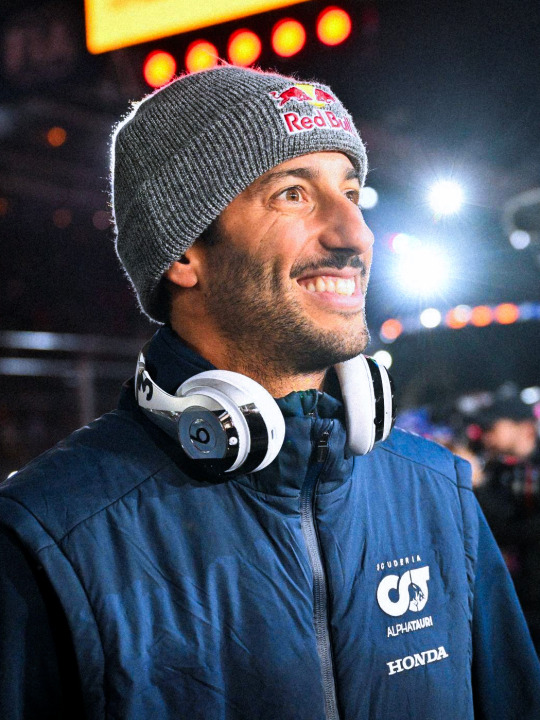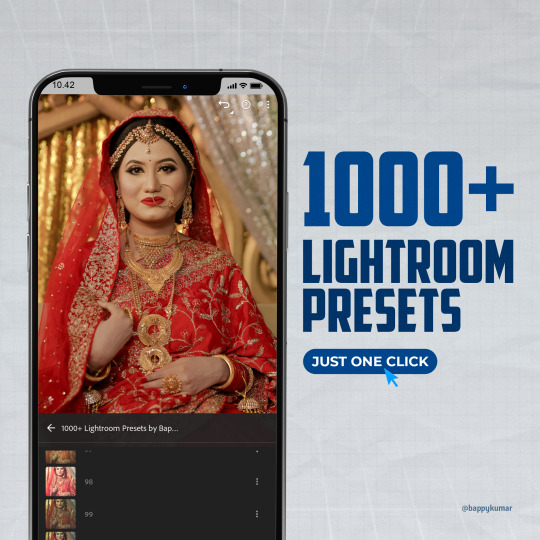#Mobile Lightroom Tutorial
Explore tagged Tumblr posts
Text
Getting To Know You Tag Game

Thank you @synne-littlebhaalbabe for the tag 🥰
LAST SONG: Dig It - Bring Me The Horizon


FAVORITE COLOR: Blue, deep ones tending towards green.
LAST BOOK: The Hobbit by J.R.R. Tolkien
LAST TV SHOW: I don't watch tvshow anymore (thank you bg3) Demon Slayer
SWEET/SAVORY/SPICY: Depends on the mood, I have cravings for all.
LAST THING I SEARCHED ONLINE: A tutorial on "How to add a watermark on Lightroom Mobile" for @bhaalspawnbarbie
RELATIONSHIP STATUS: Threesome with Astarion and a living human 🫣
CURRENT OBSESSION: Musically, Gold Souls (after months of Sleep Token). And obviously Astarion.
LOOKING FORWARD TO: Leave my job ! 8 weeks left before I'm free of it... and don't know what to do with my life but hey, ✨yolo✨

No pressure tags (sry if you've already been tagged): @moriarfer @anacdoce @iizven @aristenfromwarsaw @eruvande
18 notes
·
View notes
Text

An seperate extra from the gold panning photos.
I edited this with Lightroom mobile! And I'll tell you it's worth the money! It's SO much better than picsart. No quality loss either! If you're new to Adobe and photography and just doing basic photo editing, no fancy stuff; like adding in characters, and so on, go with the 1TB photography plan. Just lightroom. It still has a lot of features, and you get a basic understanding of how to edit photos professionally.
Photoshop is a whole other animal, but there's plenty of up-to-date tutorial videos on youtube. I just don't have a use for it at this point. 🤷♂️
#rdr2#red dead redemption 2#arthur morgan#rdr2 community#rdr2 fandom#rdr2 arthur#rdr2 photography#red dead redemption arthur#arthur morgan rdr2#red dead 2#red dead redemption two#gametastic-photography#lightroom#adobe lightroom#adobe
13 notes
·
View notes
Text
LensCraft Mastery: Elevate Your Photography Skills to the Next Level

Photography is more than just pressing a button; it’s an art, a science, and a means of storytelling. LensCraft Mastery is a comprehensive guide designed to help photographers—whether beginners or seasoned professionals—unlock their full creative potential. This tutorial series delves into the intricate aspects of photography, from mastering the fundamentals of exposure and composition to exploring advanced techniques in lighting, post-processing, and storytelling through imagery.
Why LensCraft Mastery?
The name LensCraft Mastery symbolizes the fusion of technical expertise (Lens) with artistic craftsmanship (Craft). Photography is both a technical discipline and an expressive medium, requiring a balance between understanding camera mechanics and developing an artistic vision. This tutorial series aims to bridge that gap by offering structured, easy-to-follow lessons that cater to all levels of experience.
1. Mastering the Basics of Photography
For those new to photography, LensCraft Mastery begins with the fundamental concepts that form the backbone of great photography:
Exposure Triangle: The Key to Perfectly Lit Photos
Aperture: Understanding how f-stops affect depth of field and light intake.
Shutter Speed: Capturing motion creatively, from freezing action to long exposures.
ISO: Controlling sensor sensitivity for optimal brightness without excessive noise.
Composition Techniques: Crafting Visually Stunning Images
Rule of Thirds: Placing subjects strategically for balanced compositions.
Leading Lines: Drawing the viewer’s eye to the subject.
Framing & Negative Space: Enhancing depth and focus in a photograph.
2. Advanced Photography Techniques
Once the basics are mastered, LensCraft Mastery delves into techniques that can take your photography to a professional level.
Understanding Light & Shadows
The role of natural light vs. artificial lighting in photography.
How to use soft light for flattering portraits and harsh light for dramatic effects.
Mastering golden hour and blue hour photography.
Camera Settings & Manual Mode
How to use manual focus for precision.
Customizing white balance for accurate color reproduction.
Shooting in RAW vs. JPEG and when to use each format.
3. Specialized Photography Genres
Photography is a vast field, and LensCraft Mastery explores different genres, allowing photographers to find their niche.
Portrait Photography
How to pose subjects naturally for candid and professional shots.
Best lenses for portrait photography (prime vs. zoom).
Background blur (bokeh) techniques for dreamy aesthetics.
Landscape Photography
Composition techniques for breathtaking vistas.
Use of ND (neutral density) filters for long exposures.
How to capture the perfect sunrise and sunset.
Street Photography
Capturing the essence of everyday life.
Ethical considerations in photographing strangers.
How to blend into the scene for natural compositions.
Wildlife & Macro Photography
Tips for photographing animals in motion.
Choosing the best gear for close-up macro shots.
Patience and planning for capturing rare moments.
4. The Power of Post-Processing
A great photo doesn’t always end with the camera—post-processing is essential for refining images. LensCraft Mastery provides in-depth tutorials on:
Adobe Lightroom & Photoshop Editing
Adjusting exposure, contrast, and white balance for balanced images.
Retouching techniques for portraits and landscapes.
Removing unwanted elements and enhancing details.
Mobile Editing for On-the-Go Photography
Best apps for editing (Snapseed, VSCO, Lightroom Mobile).
Color grading techniques for a unique aesthetic.
Quick retouching methods for social media-ready images.
5. Developing a Photographer’s Mindset
Photography is more than just technical skill—it requires creativity, patience, and an eye for detail. LensCraft Mastery helps photographers develop a storytelling approach, teaching how to:
Capture emotions and narratives within a single frame.
Use minimalism and abstract photography to create intriguing images.
Experiment with angles and perspectives to bring a fresh outlook to everyday scenes.
6. Monetizing Your Photography Skills
For those looking to turn their passion into a profession, LensCraft Mastery includes insights on:
How to start a photography business and build a portfolio.
Selling photos online (stock photography, prints, NFTs).
Social media strategies to grow an audience and attract clients.
Final Thoughts
Whether you’re just starting or looking to refine your craft, LensCraft Mastery offers a structured, engaging, and practical way to enhance your photography skills. By blending technical knowledge, artistic creativity, and real-world applications, this tutorial series is designed to empower photographers at every stage of their journey.
Start mastering your craft today and turn your vision into reality—one frame at a time. 📸✨
2 notes
·
View notes
Note
hey I love your edits and I was just wondering what you use/do to edit your photos? Not to copy, just in awe!
omggg thank you anon!!! the fact u want to know at all means so much 😭💓 especially when theres so many people posting edits that have a much better understanding of how to edit photos than me!!! (may i direct you to the amazing @yesloulou and her gifs..) ask me anything im happy to share and for u to copy my techniques (??) send me any other questions u have if i dont answer them i cud talk abt this all day .. 🫶🫶
so! i use the mobile version of lightroom when im editing photos quickly e.g. on race day, and tbf, its my main editing app. if that doesnt click with u, theres also snapseed which is a google editing app that i also used for a while until i realised lightroom was free (a blessing 😭). I also sometimes use photopea as a rip-off photoshop if i want to do more crazy stuff 🤪🤪🤪
first thing is crop the image if it needs it. i have a preference for portrait photos, just bc i prefer the way they look when posted. i use all sorts of ratios, but my favourites are 3:4 and 5:4 just bc i think they work best with driver portraits! (hot tip: the rule of thirds is soooo helpful!! find a metaphorical 'line' through the photo and line that up with one of the thirds) (lightroom produces the grid automatically when u crop xxx)
the next thing i do with a photo is correct the lighting and colouring. there are plenty of tutorials online and i can go more indepth if u want, but i tend to favour lower contrast with low highlights (bc i hate when u lose detail in highlights. the bane of my existence). its usually the first thing i try, but if it looks horrible i'll try different things. to correct colouring, i use the tint/temperature sliders (im still learning how to intuitively use these rather than messing around and going hm. too purple right before i post). since most of the photos i edit r taken by super talented F1 photographers i rarely have to use curves, but sometimes i do! so i do that as well before i get into the meat of it if needed 😌
then i adjust the tint/temperature & vibrance and saturation until i'm getting the vibe i want (e.g. i love making max photos cooler toned). then i use colour mix to change anything specific about colours in the image (i most commonly use this to make daniel/charles' skin less yellow and more red toned, to soften any redness or to make max's blush pink). then i colour grade!
after that i decide whether the image needs sharpening, extra texture or dehazing, and then i add grain! i prefer a rough, understated grain so that you dont lose loads of the detail from the photo. here's some examples of before and afters of some of my more complex edits:


-> this one was lighting correction and colour correction! i also used curves im pretty sure 😭


-> exposure and contrast changes and colour changes/grading (can we appreciate this photo.. wow)


-> made photo brighter (pretty sure i lowered the highlights..) n changed the temperature of the photo
i hope this helps!!!! if anyone wants me to do like a proper adjustment by adjustment type thing send me an ask and i will do!!! thank you so much kind anon 💖🫵
#ahhhhh anon ur so sweet i hope this is comprehensive?? sorry if i went overboard 😔😔😔#beth answers#lovely internet people
14 notes
·
View notes
Text
Is Blogging Still Relevant in the Age of Tiktoks and Instagram?

You might be wondering if blogging still holds its ground with the rise of TikTok and Instagram. The answer is a certainly yes! While these platforms are fantastic for quick, eye-catching content, blogs offer a special space for diving deep into topics. They allow for rich storytelling, comprehensive guides, and a personal touch that helps foster community and build trust. Many readers still seek out blogs for detailed insights and tutorials that shorter formats can’t provide. Plus, a well-crafted blog can drive traffic to your social media profiles, enhancing your overall online presence. In this ever-evolving digital landscape, blogging remains a powerful and relevant tool!
About Instagram
Since its 2010 launch, Instagram quickly gained popularity, now boasting over one billion active users. While many content creators favor Instagram's visual appeal and immediacy, its limitations, such as non-clickable links, hinder blog promotion. As Instagram evolved into a hub for curated content, it has overshadowed traditional blogging, leading some bloggers to transition entirely to the platform. However, the depth and engagement of well-crafted blog posts remain unmatched by shorter social media formats.
Instagram User Growth from 2013 to Present

About TikToks
In the first quarter of 2019, TikTok was the most downloaded app from Apple’s iOS App Store, rapidly gaining widespread popularity. Its influence has even extended to Instagram, where numerous food posts feature popular "TikTok recipes," such as baked oats and feta pasta. Additionally, Instagram Reels appear to draw inspiration from TikTok, and the platform tends to prioritize accounts that utilize this feature. While achieving growth on Instagram can be difficult, TikTok's algorithm allows users to go viral regardless of their follower count, highlighting a key difference between the two platforms.
Tiktok’s Exploasive Growth from Launch to 2024

Why Were These Platforms were Acknowledged by Most Society
Joining platforms like Instagram and TikTok is straightforward. Users simply sign up and begin publishing content without the complexities associated with traditional blogging. There is no need to manage a DNS server, purchase a domain, pay for hosting, or install software like WordPress. Additionally, users do not have to navigate themes or widgets. All that is required is a mobile phone, which allows for easy photo editing with applications like Lightroom and VSCO, enabling the creation of a visually appealing Instagram feed. TikTok similarly simplifies the video editing process within the app, eliminating the need for advanced software like Final Cut Pro or Adobe’s suite.
Furthermore, Instagram and TikTok offer the potential to reach a vast audience. As Valentina Chirico notes, every influencer seeks to expand their reach, and both platforms provide opportunities to present content to millions. The audience is already present; creators only need to ensure their content is visible. In contrast, blogging often requires significant effort to build an audience, especially if one is not already prominent on search engines like Google or Pinterest. Blogging typically revolves around long-form content, which can be at odds with the fast-paced consumption habits of today’s mobile users who prefer quick, engaging posts. Consequently, brands are increasingly inclined to collaborate with Instagram and TikTok influencers, sometimes overlooking traditional bloggers, which can lead to frustration for those who feel well-suited for such opportunities.
Is Blogging Entirely “Dead”?

Despite predictions that blogging may decline due to the rise of social media, I firmly believe blogging remains relevant. While the audience and consumption methods are changing, with a greater focus on problem-solving content and SEO-driven traffic, blogs continue to thrive as part of a broader content marketing strategy. Additionally, blogs provide greater control and security compared to social media platforms, where accounts can be banned or deleted. Personally, blogging remains a full-time, profitable venture, proving its continued value.
Will Blog Still Exist?
Despite predictions that blogging may decline due to the rise of social media, I firmly believe blogging remains relevant. While the audience and consumption methods are changing, with a greater focus on problem-solving content and SEO-driven traffic, blogs continue to thrive as part of a broader content marketing strategy. Additionally, blogs provide greater control and security compared to social media platforms, where accounts can be banned or deleted. Personally, blogging remains a full-time, profitable venture, proving its continued value.
How Will Blog Change Towards The Future

Blogs somehow will find it’s way to change in several ways. As generative AI gains popularity, storytelling will take on greater significance. Blogs will evolve into tools for building personal brands, making it more challenging to stand out. Ultimately, blogs are likely to shift into digital publishing enterprises.
Corinne (2021). “Is Blogging Dead? The Rise of Instagram and TikTok”. Skinnedcartree, April 9, 2021. https://skinnedcartree.com/2021/04/is-blogging-dead-the-rise-of-instagram-and-tiktok.html.
Michiel Heijmans (2021). “The Future of Blogging in a Video-Obsessed World”. Yoast, June 3, 2021. https://yoast.com/the-future-of-blogging-in-a-video-obsessed-world/.
Oskar Mortensen (2024 n.d.). “How Many Users on Instagram? Statistics & Facts”. SEO.ai, April 24, 2024. https://seo.ai/blog/how-many-users-on-instagram.
Oskar Mortensen (2024 n.d.). “How Many Users on TikTok? Statistics & Facts”. SEO.ai, February 2024. https://seo.ai/blog/how-many-users-on-tiktok.
2 notes
·
View notes
Text
Life and Pictures: Entry #1
Starting as a Beginner: Exploring Photography Gear

In our first entry, we’re focusing on a crucial aspect for beginners: choosing and using the right gear. Whether you’re intrigued by the convenience of smartphones or the versatility of a DSLR, understanding your options can help you get started on the right foot. Let’s break down some popular choices and tips for getting the most out of your equipment.
1. Smartphones: Your Everyday Camera

Description:
Type: Point-and-shoot camera Characteristics: Light, convenient, user-friendly Suitable for: Casual users, beginners, and anyone who wants to capture spontaneous moments without carrying additional equipment.
Why Start with a Smartphone?
Always With You: Smartphones are incredibly convenient, making it easy to capture moments on the go. User-Friendly: Modern smartphones come with automatic settings that adjust for lighting and focus, making them perfect for beginners. Built-In Editing Tools: Many smartphones have robust editing features and apps, allowing you to tweak your photos directly on your device.
Tips for Smartphone Photography:
Use Grid Lines: Enable grid lines on your camera app to help you apply the rule of thirds, enhancing the composition of your shots. Tap to Focus: Tap the screen to focus on your subject. You can also adjust the exposure by sliding your finger up or down. Explore Apps: Play around with different photography apps to enhance your photos. Apps like Snapseed, VSCO, or Adobe Lightroom Mobile offer powerful editing tools.
Smartphones are equipped with built-in cameras that are perfect for everyday use. They are designed to be simple and intuitive, making them ideal for capturing quick and spontaneous shots. With the added benefit of editing apps, you can enhance your photos directly on your device.
Beginner Guide to Smartphone Photography:
youtube
2. Compact Cameras: Simple and Versatile

Description:
Type: Point-and-shoot camera Characteristics: Light, versatile, higher image quality than smartphones, better zoom capabilities Suitable for: Beginners and enthusiasts who want better image quality and more control over settings without the bulk of larger cameras.
Why Choose a Compact Camera?
Better Quality: Higher resolution and image quality than most smartphones. Zoom Capabilities: Optical zoom allows for better quality images than digital zoom. Manual Controls: More control over settings like aperture, shutter speed, and ISO.
Getting Started with Compact Cameras:
Learn the Basics: Familiarize yourself with aperture, shutter speed, and ISO. Use Auto Mode: Start with auto mode and gradually experiment with manual settings. Keep It Simple: Begin with the built-in lens; as you gain experience, you can explore more advanced settings.
Compact cameras, also known as point-and-shoot cameras, are lightweight and easy to carry. They offer better image quality than smartphones and come with manual control options, making them a great choice for those looking to improve their photography skills.
Beginner Guide to Compact Camera Photography:
youtube
3. DSLR Cameras: A Step Up in Quality

Description:
Type: Professional camera Characteristics: Larger, heavier, interchangeable lenses, superior image quality, advanced features Suitable for: Serious enthusiasts and professional photographers who require high performance, versatility, and superior image quality.
Why Choose a DSLR?
Exceptional Image Quality: DSLRs feature larger sensors, resulting in superior image quality, especially in low light. Interchangeable Lenses: The ability to switch lenses allows you to tailor your gear to your specific needs, from wide-angle shots to macro photography. Advanced Features: DSLRs offer advanced features like fast autofocus, multiple focus points, and high burst rates, making them ideal for capturing fast-moving subjects.
Tips for DSLR Beginners:
Learn Your Camera: Take time to understand the different settings and how they affect your photos. Manuals and online tutorials can be incredibly helpful. Practice with Different Lenses: Start with the standard kit lens, but explore other lenses as you become more comfortable. A prime lens can be a great way to experiment with depth of field. Join a Photography Community: Engaging with other photographers can provide valuable insights and feedback. Consider joining local clubs or online forums to share your work and learn from others.
DSLR cameras are known for their excellent image quality and flexibility due to their interchangeable lenses. They offer a wide range of manual controls and advanced features, making them suitable for various types of photography, from portraits to landscapes.
Beginner Guide to DSLR Camera Photography:
youtube
4. Mirrorless Cameras: The Modern Alternative

Description:
Type: Professional camera Characteristics: Light, compact, interchangeable lenses, electronic viewfinder, silent shooting Suitable for: Enthusiasts and professionals who want high performance and quality in a more portable package compared to DSLRs.
Why Go for a Mirrorless Camera?
Compact and Lightweight: Mirrorless cameras are smaller and lighter than DSLRs, making them more portable without sacrificing performance. High-Quality Images: They offer similar image quality to DSLRs, thanks to their large sensors and advanced technology. Electronic Viewfinder: Many mirrorless cameras feature an electronic viewfinder that displays your settings in real time, helping you visualize the final image.
Tips for Using Mirrorless Cameras:
Explore the Features: Mirrorless cameras often come with innovative features like 4K video recording and high-speed continuous shooting. Take time to explore these functions. Invest in Good Lenses: The quality of your lenses significantly impacts your photos. Start with a versatile zoom lens and consider adding prime lenses as you progress. Stay Updated: The technology in mirrorless cameras is continually evolving. Keep an eye on new models and firmware updates to make the most of your gear.
Mirrorless cameras combine the image quality and flexibility of DSLRs with a more compact and lightweight design. They use electronic viewfinders, allowing you to see exposure adjustments in real-time, and are known for their silent shooting capabilities.
Beginner Guide to Mirrorless Camera Photography:
youtube
5. Vintage Film Cameras: The Nostalgic Touch

Description:
Type: Professional camera (vintage/analog) Characteristics: Heavy, manual settings, unique aesthetic, requires film Suitable for: Enthusiasts and professionals who appreciate the classic film photography process and aesthetic, and those who want to learn the fundamentals of photography.
Why Try a Vintage Film Camera?
Unique Aesthetic: Film cameras offer a distinct look and feel, with a unique color rendition and grain structure that digital cameras often lack. Learning Experience: Shooting with film encourages a deeper understanding of exposure and composition, as you have fewer chances to correct mistakes. Tactile Experience: The process of loading film, taking pictures, and developing prints adds a tactile, hands-on dimension to photography.
Tips for Shooting with Film Cameras:
Choose the Right Film: Different films have different characteristics. Start with a versatile ISO 400 film, and explore different types as you gain experience. Develop Your Own Film: If you’re up for a challenge, try developing your own film at home. It’s a rewarding process that enhances your connection to the art. Embrace the Learning Curve: Film photography has a steeper learning curve, but the rewards are worth it. Take your time and enjoy the process of discovering what works best for you.
Vintage film cameras offer a nostalgic feel and a unique aesthetic that digital cameras can’t replicate. They require manual settings and film, which teaches discipline and a deeper understanding of photography basics. These cameras are appreciated by those who enjoy the tactile process and classic look of film photography.
Beginner Guide to Using Vintage Film Cameras:
youtube
Starting with photography gear can be both exciting and daunting, but remember, the best camera is the one you have with you. Whether you begin with a smartphone, compact digital camera, DSLR camera, mirrorless camera, or vintage film camera, the key is to explore, experiment, and find what inspires you.
Happy shooting, and may your journey through the world of photography be as fulfilling and creative as possible!
#photography#original photographers#blackandwhitephotography#photographers on tumblr#film photography#photo#photoblog#photographer#life#lifestyle#perspective#leisure#hobbies#hobby#picture#nature#life experiences#my experiences#self expression#expressionism#abstract expressionist art#freedom of expression#35mm#35mm film#35mm photography#youtube
2 notes
·
View notes
Text
Marketing Strategies And Marketing Mix Of Adobe
Source: The Brand Hopper
"Adobe’s Marketing Mix (4Ps): A Deeper Dive
Adobe’s success can be attributed to its strategic implementation of the marketing mix, the 4Ps: Product, Price, Place, and Promotion. Let’s explore each element in detail:
1. Product:
Breadth: From Photoshop and Illustrator for design to Premiere Pro and After Effects for video editing, Adobe covers diverse creative needs. They even offer XD for web design and Spark for social media content creation.
Depth: Each software has various versions. Photoshop Elements caters to beginners, while Photoshop CC caters to professionals. This ensures accessibility and scalability for different user groups.
Innovation: Adobe Research invests heavily in AI, machine learning, and other cutting-edge technologies. This translates into features like Content-Aware Fill in Photoshop and Rotoscoping in After Effects.
Integration: Adobe products work seamlessly together. For example, you can edit a photo in Photoshop and directly export it to Premiere Pro for video editing.
Services: Adobe Creative Cloud offers 20GB of cloud storage, access to Adobe Fonts, and integration with stock photo libraries like Adobe Stock, enhancing the overall creative workflow.
2. Price
Subscription Model: Adobe transitioned from perpetual licenses to subscriptions in 2013. This makes their software more affordable for individuals and small businesses, especially with monthly payment options.
Tiered Pricing: Individual, team, and enterprise subscriptions offer different features and functionalities, catering to diverse needs and budgets.
Free Trials and Freemium Options: Adobe offers free trials for most products, allowing users to experience the software firsthand. Some products also have limited free versions with basic features.
Discounts: Educational institutions, students, and teachers receive significant discounts on Adobe Creative Cloud, expanding access to future generations of creative professionals.
Bundled Offerings: Adobe Creative Cloud offers various bundles combining multiple products at a discounted price. This incentivizes purchases and increases perceived value.
3. Place
Direct Sales: Adobe sells directly through its website and flagship stores, offering personalized recommendations, tutorials, and in-depth product demonstrations.
Partner Channels: Strategic partnerships with leading tech companies like Microsoft and Apple expand reach and distribution channels. This makes Adobe software easily accessible through familiar platforms.
Online Marketplaces: Adobe software is available on Amazon and the Microsoft Store, increasing visibility and accessibility for users who prefer these platforms.
Cloud Delivery: Adobe Creative Cloud is delivered through the cloud, eliminating installation hassles and allowing users to access their files and projects from any device with an internet connection.
Mobile Apps: Adobe offers mobile versions of popular products like Photoshop and Lightroom, catering to the on-the-go creative needs of users and expanding their creative potential beyond desktops.
4. Promotion
Content Marketing: Adobe offers high-quality content across various formats. The Adobe Blog features in-depth tutorials, industry insights, and creative inspiration. They also have dedicated YouTube channels for each product, offering tutorials, tips, and behind-the-scenes glimpses.
Community Engagement: Adobe fosters a strong community through forums like the Adobe Help Center and user groups. They also host events like Adobe MAX, which connects users, showcases new features, and inspires creativity.
Social Media Marketing: Active engagement on platforms like Twitter, Instagram, and YouTube builds brand awareness and connects with users directly.
Influencer Marketing: Collaborations with renowned creative professionals like photographers and designers amplify brand messaging and reach new audiences. Adobe also has an Adobe Creative Experts program, empowering passionate users to share their knowledge and expertise.
Events and Conferences: Adobe hosts and participates in industry events like Adobe MAX and Adobe Summit. These events showcase innovation, connect with potential customers, and build brand awareness.
Paid Advertising: Adobe uses targeted ads on platforms like Google and social media to reach specific audience segments and drive traffic to their website and free trial offers.
By strategically implementing these elements, Adobe has created a marketing mix that is comprehensive, effective, and adaptable. They have gone beyond simply selling software; they have built a community, fostered creativity, and established themselves as a leader in the industry. This approach not only drives sales but also builds brand loyalty and establishes a strong foundation for future growth. "
#mktmarketing4you#corporatestrategy#marketing#M4Y#lovemarketing#IPAM#ipammarketingschool#ContingencyPlanning#virtual#volunteering#project#Management#Economy#ConsumptionBehavior#BrandManagement#ProductManagement#Logistics#Lifecycle
#Brand#Neuromarketing#McKinseyMatrix#Viralmarketing#Facebook#Marketingmetrics#icebergmodel#EdgarScheinsCultureModel#GuerrillaMarketing#STARMethod#7SFramework#gapanalysis #AIDAModel #SixLeadershipStyles #MintoPyramidPrinciple #StrategyDiamond #InternalRateofReturn #irr #BrandManagement #dripmodel #HoshinPlanning #XMatrix #backtobasics #BalancedScorecard #Product #ProductManagement #Logistics #Branding #freemium #businessmodel #business #4P #3C #BCG #SWOT #TOWS #EisenhowerMatrix #Study #marketingresearch #marketer #marketing manager #Painpoints #Pestel #ValueChain # VRIO #marketingmix
Thanks for following us.

https://thebrandhopper.com/2024/02/06/marketing-strategies-and-marketing-mix-of-adobe/
2 notes
·
View notes
Note
For the free gif making methods anon: nicolemaiines has some (instagiffer, ezgif, and photopea) in her tutorial masterlist ( https://nicolemaiines.tumblr.com/post/657261123022766080/nicolemaiines-how-tos-a-collection-of ) that may help.
In addition, you could try Photoscape. Here's a link to a tutorial on that ( https://kebeans.tumblr.com/post/79603800218/how-to-make-gifs-with-photoscape ) - although I'd personally recommend using a screencapping method from another tutorial and grabbing the program directly from the people who made it @ photoscape.org so you have the latest/safest version. There's some GIMP tutorials floating around too, while I wouldn't rec using GIMP personally just because it's a nightmare to gif on, here's a link to one as well: https://dekaythepunk.tumblr.com/post/162071343505/this-is-an-updated-version-of-making-gifs-on-gimp
Also while Photoshop isn't isn't free, I know a couple people who didn't know this was an option so I do wanna mention it in case it's accessible to you at this price: Adobe also has a $10 USD a month Photography plan that comes with Lightroom, Photoshop, and the two programs' mobile apps. We get less cloud storage space and generative fill credits with the new AI tool Adobe rolled out than the $20 USD a month Photoshop only plan, but if that's not a deal breaker, I actually highly recommend going with the Photography plan if you're going to pay for Photoshop ngl (but I also use Photoshop daily, it's my post-work self care thing so that's something to factor in with my assessment/bias). Sorry for how long this is, I ramble a lot, but I hope this helps a bit!
oh this is super helpful thank u sm !! for the anon that asked <3 - o
6 notes
·
View notes
Text
Free & Powerful: Best Photo Editing Apps for Android Devices
In the era of phone photography, editing your images prior to posting them is just as crucial as capturing them. Whether you are an occasional user or an emerging content designer, the best free photo editor for Android can totally change your images into scroll-stopping images. Happily, the Play Store teems with good choices—most of them free and surprisingly capable.
In this tutorial, we'll walk you through the best free image editing application for Android, including the top choices that have professional-level capabilities without requiring you to spend a rupee.
Why You Need a Good Photo Editing App
Smartphones have advanced with in-camera capabilities, but editing apps allow you to tweak the minute details—brightness, contrast, saturation, filters, and even eliminate unwanted objects. With the top free photo editing app for Android, you get to do all this on-the-go, from your phone, without a computer.
Apps now provide features such as:
AI-driven background removal
Filters in one tap
Object cloning and healing
Multi-step color correction
Text overlays and stickers
So, let's get started with the best free photo editor apps for Android.
1. Snapseed – By Google
Snapseed is still a go-to for many and pros alike. It provides a smooth, ad-free experience along with an enormous collection of editing tools. From selective editing to accurate color adjustments, it's a clear winner as a best free photo editing app for Android.
Key Features:
29+ editing tools and filters
RAW file editing
Blemish healing tool
Lens blur and HDR scape
2. Lightroom Mobile – Adobe Quality for Free
Lightroom Mobile provides robust capabilities under a free plan that are well-suited for color grading and high-end editing. It is generally recommended as the best free photo editor app for Android for someone who is already familiar with Adobe's desktop software.
Key Features:
Professional presets
Auto-adjust AI tools
Selective edits and healing brush
Cloud sync for Adobe subscribers
If you're a beginner or want precise control over your photos, Lightroom is a solid choice for the best free photo editing software for Android.
3. PicsArt – Creative Freedom
PicsArt is the ideal app for artistic editing. It's filled with filters, stickers, collage features, and more. Though it does have in-app purchases, its gratis features make it a reliable choice when on the lookout for the best free photo editing app for Android.
Key Features:
AI effects
Background changer
Drawing tools and brushes
Meme and sticker generator
4. PhotoDirector – Real-Time Editing Fun
PhotoDirector integrates beauty filters, animations, and visual effects into a super-intuitive interface. Most users think of it as a best free photo editing app for Android due to how simple it makes advanced edits.
Top Features:
Sky replacement
Object removal
Animated decorations and overlays
Face retouch tools
PhotoDirector sits high among apps with advanced effects without cost, according to World Tech Zone.
5. Canva – Simple Yet Powerful
Though mostly recognized as a design application, Canva's mobile app features a useful photo editor. If you're a social media fan, this may be the best free photo editing software for Android to suit your tastes.
Major Features:
Drag-and-drop interface
Tools for overlaying text and graphics
Pre-made templates for Instagram, YouTube, etc.
One-tap improvements
6. Pixlr – No-Nonsense Editing
Pixlr has been relied upon by Android users for a long time because of its balance of simplicity and functionality. It's easily accessible and does not consume device memory, and so it's an underappreciated best free photo editing app for Android.
Major Features:
Double exposure
Auto-fix and stylize filters
Collage maker
Easy UI for quick editing
Choosing the Right App for You
With there being so many fantastic options, choosing the best free photo editing app for Android comes down to your needs:
Rapid social posts? Try Canva or PicsArt.
Pro retouching? Lightroom or Snapseed works best.
Artistic collages? Pixlr or PhotoDirector are perfect.
Whatever you do, each app listed here is a best free photo editing app for Android and all provide robust capabilities without requiring you to pay upfront.
Tricks for Getting the Most Out of Your App
Use all tools: Most users only work with basic filters. Get into curves, tuning, and layering controls.
Save presets: You can save your look with apps such as Lightroom and Snapseed.
Don't over-edit: Make images stand out, not appear phony.
High-resolution exports: Always export your photo in the highest resolution available.
According to World Tech Zone, AI-powered photo editing trends will only increase in 2025, so the time is ideal for playing around with your choices.
Final Thoughts
Having the top free photo editing application for Android is equivalent to having a pocket photo studio. Whether you are beauty-fying a selfie or producing content for your audience, these applications guarantee that you don't require costly software or a desktop computer in order to achieve professional-looking outcomes.
Keep in mind, the proper app has the potential to take your smartphone photography from great to incredible—and the top free photo editor app for Android is only a click away.
0 notes
Text
Snap Like a Pro: The Ultimate Guide to Photography Workshops in Singapore
Singapore is a vibrant city brimming with architectural wonders, lush green spaces, diverse cultures, and dynamic street scenes — a true paradise for photographers. Whether you’re a complete beginner or a seasoned shutterbug looking to refine your craft, photography workshops in Singapore offer an exciting opportunity to sharpen your skills. With a mix of scenic locations and expert instructors, the Lion City is an ideal learning ground for budding photographers. In this guide, we’ll explore the various types of workshops available, what to expect, and how to choose the right one for your needs.
Why Join a Photography Workshop?
Photography is more than just pointing a camera and clicking a button. It involves mastering technical skills like composition, lighting, camera settings, and post-processing. Professional photography workshops provide structured learning environments where you can gain hands-on experience, receive expert guidance, and get feedback on your work. Unlike online tutorials, workshops allow you to practice in real-time, ask questions, and collaborate with fellow enthusiasts.
Types of Photography Workshops in Singapore
1. Beginner Photography Workshops
These professional photography workshops are perfect for newcomers who are just starting out. Topics typically covered include:
Understanding ISO, aperture, and shutter speed
Camera handling and settings
Basic composition and framing
Natural lighting and exposure
Classes are often held in studio settings or outdoors in iconic locations like Marina Bay Sands or Gardens by the Bay, where learners can apply techniques in real-world settings.
2. Mobile Photography Workshops
With smartphone cameras getting increasingly sophisticated, mobile photography has become a popular genre. These workshops teach you how to:
Maximize your phone’s camera features
Use editing apps like Snapseed or Lightroom Mobile
Frame shots creatively for social media Ideal for content creators, influencers, or anyone who loves to capture the moment on-the-go.
3. Street Photography Workshops
Singapore’s neighborhoods like Little India, Chinatown, and Kampong Glam are perfect for learning the art of street photography. These workshops focus on:
Capturing candid moments
Working with natural light and shadows
Telling stories through images
Respecting privacy and ethics in public spaces
Street photography workshops are usually conducted in small groups to allow for flexible movement and personalized coaching.
4. Portrait Photography Workshops
Learn how to work with models, natural and artificial lighting, and posing techniques. Key skills include:
Studio lighting setups
Outdoor portraiture using reflectors and diffusers
Communication techniques for better expressions These workshops often include live model shoots and feedback sessions to improve your people photography skills.
5. Night and Low-Light Photography Workshops
Singapore’s skyline truly comes alive after dark. In night photography workshops, you’ll learn how to:
Shoot long exposures
Use tripods and remote triggers
Capture light trails and reflections
Work with low-light ISO settings Common venues include Marina Bay, Clarke Quay, and Jewel Changi Airport — all of which offer stunning nighttime photo opportunities.
6. Nature and Wildlife Photography
These workshops are great for those who love the outdoors. Whether you're at the Singapore Zoo, MacRitchie Reservoir, or the Sungei Buloh Wetland Reserve, you’ll learn how to:
Use telephoto lenses
Capture motion and animal behavior
Blend into natural environments for candid shots These sessions often involve early morning or late afternoon excursions for the best lighting and wildlife activity.

Top Photography Workshop Providers in Singapore
1. Objectifs – Centre for Photography and Film
Located in the arts district, Objectifs offers both short-term courses and long-term mentorship programs. Their instructors are experienced professionals who cover genres like documentary, portrait, and conceptual photography.
2. Photography Academy Singapore
Known for hands-on learning, this academy provides beginner to advanced courses, including post-processing tutorials using Adobe Lightroom and Photoshop.
3. RS Photography
Run by professional photographer Ryan Sng, this platform offers curated photo walks, personalized coaching, and workshops on composition, lighting, and more.
4. The School of Photography
With structured syllabi and small class sizes, this school is excellent for foundational training. It offers specialized courses in portraiture, studio lighting, and travel photography.
What to Bring to a Workshop
Here’s a quick checklist of what you may need:
DSLR or mirrorless camera (depending on the course)
Fully charged batteries and memory cards
Tripod (especially for night or landscape workshops)
Notebook or digital device for taking notes
Weather-appropriate clothing and water for outdoor sessions
Some workshops may provide equipment, so always check in advance.
Choosing the Right Workshop for You
When selecting a workshop, consider the following:
Skill Level: Choose a course that matches your current proficiency.
Area of Interest: Focus on genres you’re passionate about to maintain motivation.
Instructor Experience: Look for trainers with a solid portfolio and teaching credentials.
Class Size: Smaller groups often allow for more personalized attention.
Duration and Schedule: Pick a course that fits your availability — options range from half-day sessions to multi-week programs.
Beyond the Workshop: Continuing Your Photography Journey
Attending a workshop is just the beginning. Keep practicing what you’ve learned, join local photography clubs or online forums, and participate in photo competitions to challenge yourself. Singapore also hosts annual events like Singapore International Photography Festival, which can serve as both inspiration and exposure.
You can also build a portfolio through social media platforms like Instagram or Flickr and seek feedback from the photography community. The more you shoot and share, the more confident and skilled you’ll become.
Final Thoughts
Photography is a craft that blends technical skills with artistic vision. Whether you’re exploring hidden alleys or capturing a sunrise, Singapore offers endless photographic inspiration. By joining a photography workshop, you not only learn how to use your camera — you learn how to see the world differently.
So grab your gear, step out, and snap like a pro. Your journey to becoming a better photographer starts with a single click.
#headshot photography singapore#professional headshots singapore#event photographer singapore#portrait photographer singapore
0 notes
Text
Mastering Light Trails with iPhone: A Beginner's Guide to Long Exposure

Capturing the mesmerizing flow of light trails—whether from speeding cars, vibrant cityscapes, or handheld light painting—used to require a DSLR, a tripod, and advanced editing skills. Thanks to advancements in mobile camera technology, particularly with iPhones, you can now shoot professional-looking long exposure images right from your pocket. Whether you're a hobbyist or an aspiring content creator, learning how to master light trails with your iPhone can elevate your mobile photography game.
In this guide, we'll walk you through the essentials of long exposure photography on iPhone, with a special focus on light trails. Plus, we’ll show how platforms like Techiexpert are empowering creators with the latest insights in mobile tech and creative tools.
What Are Light Trails?
Light trails are visual streaks created when a moving light source—such as car headlights or fireworks—is captured using a slow shutter speed. The longer the camera's sensor is exposed to light, the more motion it records, resulting in beautiful lines that convey movement and energy.
Tools You’ll Need
While the latest iPhones come equipped with impressive low-light capabilities and computational photography features, a few extra tools can enhance your results:
iPhone (iPhone 11 and above preferred)
Tripod or a stable surface to avoid motion blur
Long exposure app (like Spectre, Slow Shutter Cam, or ProCamera)
Optional: ND filters for shooting during daylight
Step-by-Step: Capturing Light Trails on iPhone
1. Choose the Right Location
Look for areas with consistent moving lights. Highways, busy intersections, amusement parks, or even nighttime festivals are great choices. Safety is key—make sure you’re in a secure, legal spot for shooting.
2. Stabilize Your iPhone
A shaky hand can ruin a long exposure shot. Use a tripod or brace your iPhone against a flat surface. Even a mini tripod or phone stand can significantly improve clarity.
3. Use the Live Photo Long Exposure Trick (Built-in)
If you're not ready to download third-party apps:
Open the native Camera app.
Switch to Live Photo mode.
Take a shot of moving lights.
Open the photo from your gallery, swipe up, and select “Long Exposure” from the effects.
This method is quick and user-friendly, though it offers limited control over exposure time.
4. Use a Dedicated Long Exposure App
Apps like Spectre Camera use AI and computational exposure stacking to deliver high-quality light trail images.
Open the app and set exposure duration (5s to 30s recommended).
Lock focus and exposure on a bright spot.
Hit the shutter and stay steady.
These apps often allow manual adjustments for ISO, shutter speed, and focus—great for learning the fundamentals of photography.
Tips for Better Results
Shoot just after sunset (blue hour) for dramatic skies and vibrant light trails.
Experiment with different shutter speeds to find the ideal length for your scene.
Use burst mode or take multiple shots to increase your chances of capturing the perfect trail.
Edit with care using apps like Lightroom Mobile or Snapseed to enhance contrast, sharpness, and color balance.
Stay Updated with the Latest in Mobile Photography
As mobile photography continues to evolve, staying informed is essential. That’s where Techiexpert comes in. Whether you're exploring the best new apps for creatives, learning about AI-driven photography tools, or simply looking for hands-on tutorials, Techiexpert is your go-to platform.
Their regular updates and expert reviews help both beginners and pros navigate the fast-changing world of tech—from smartphone innovations to practical guides like this one. If you’re passionate about technology and creativity, Techiexpert ensures you’re always one step ahead.
Final Thoughts
Mastering light trails with your iPhone is both rewarding and accessible. With the right tools, settings, and a bit of patience, you can create captivating images that rival those from professional cameras. Embrace the night, find your light, and let your creativity flow.
And don’t forget—whether you're looking for inspiration, gear tips, or cutting-edge tech insights, Techiexpert has your back.
0 notes
Text
The Essential Role of Adobe Software in the Modern Photographer's Workflow
Image editing with adobe : Q & A Tutorial
1.Do photographers use Adobe?
Yes, many photographers use Adobe software, particularly Adobe Lightroom and Adobe Photoshop, for editing and processing their images. These tools provide a wide range of features for enhancing photos, organizing images, and performing detailed retouching, making them popular choices among both amateur and professional photographers.
2. Which Adobe allows editing?
Adobe Acrobat allows editing of PDF files. For image editing, Adobe Photoshop is the go-to software. Adobe Illustrator is used for vector graphics and can also be edited. Additionally, Adobe InDesign is used for layout design and allows editing of text and images within that context. Each program specializes in different types of editing tasks.
3. Is Adobe Lightroom free?
Adobe Lightroom is not free. It offers a subscription-based model with different pricing tiers, including a free trial for new users. After the trial period, users must pay to continue accessing the full features of the software. There are also limited free mobile versions with basic editing tools available, but these do not include all functionalities.
4. How do I edit a file in Adobe?
To edit a file in Adobe, open the appropriate Adobe application (like Adobe Acrobat for PDFs or Adobe Photoshop for images). Use the editing tools available in the toolbar to make changes, such as adding text, images, or annotations. After editing, save the file by clicking "File" and then "Save" or "Save As" to keep your changes.
5. What is Adobe editor called?
Adobe's primary editing software is called Adobe Acrobat, which is used for creating, editing, and managing PDF documents. For photo editing, Adobe offers Adobe Photoshop. For video editing, Adobe Premiere Pro is the go-to application. Each of these tools serves different purposes within Adobe's suite of creative software.

Visit: VS Website See: VS Portfolio
0 notes
Text
Leveraging Social Media for Your Tea Business Growth – Basketleaf
In today’s digital age, social media is a powerful tool for small businesses looking to grow their customer base, increase brand awareness, and build loyalty. best businesses under ₹1 lakh social media offers a cost-effective way to reach tea enthusiasts and create a community around your brand. This guide covers actionable strategies to leverage social media platforms, build a following, and drive growth for your tea business.
1. Define Your Brand Identity and Target Audience
Before diving into social media, it’s essential to clarify your brand’s identity, values, and the audience you’re trying to reach. A strong brand identity will guide your content creation and help you connect with the right customers.
Questions to Consider:
What makes your tea business unique?
Who are your ideal customers? Are they young professionals, health-conscious individuals, or traditional tea lovers?
What values does your brand represent, such as sustainability or luxury?
Tip: Create a simple brand guideline document to maintain a consistent look and feel across your social media profiles.
2. Choose the Right Platforms for Your Tea Business
Not all social media platforms may be suitable for your business. Here’s a breakdown of popular platforms and how they can benefit a tea business:
Instagram: Ideal for visually-driven content, showcasing your tea varieties, packaging, and brand aesthetics.
Facebook: Good for building a community, engaging with older audiences, and creating a local presence.
Pinterest: Useful for sharing tea recipes, lifestyle images, and driving traffic to your website.
YouTube: Great for video content, such as tea preparation tutorials, tasting sessions, or behind-the-scenes looks.
WhatsApp Business: Allows direct communication with customers and offers features for cataloging and sharing products.
Tip: Focus on 2–3 platforms to start and gradually expand once you have a solid presence.
3. Create High-Quality, Engaging Content
Content is the core of your social media strategy. To keep your audience engaged, post a variety of content that highlights different aspects of your tea business.
Content Ideas for a Tea Business
Product Showcases: Share photos of your different tea varieties, packaging, and accessories.
Behind-the-Scenes: Show how your tea is sourced, blended, or packaged.
Tea Education: Post about the benefits of different teas, their origins, and how to brew them.
User-Generated Content (UGC): Encourage customers to share their tea experiences, and repost their photos with proper credit.
Seasonal Content: Tailor content to align with festive seasons, such as sharing warm tea recipes in winter or iced teas in summer.
Tip: Use free editing tools like Canva or Lightroom Mobile to enhance your visuals and maintain a cohesive look for your posts.
4. Engage with Your Audience Consistently
Engagement is critical for social media growth. Actively respond to comments, messages, and shares to build trust and create a community around your brand.
Engagement Tips:
Reply to Comments: Acknowledge comments on your posts to foster a friendly connection.
Use Polls and Questions: Engage your audience by using interactive features on Instagram Stories, like polls, questions, and quizzes.
Host Giveaways: Create buzz around your brand by offering a free tea sampler or product package. Ask users to follow, like, and tag friends to enter, boosting your reach organically.
Tip: Set aside 15–20 minutes each day to engage with followers. Consistency is key to building relationships.
5. Use Influencer Marketing to Reach a Broader Audience
Partnering with influencers can be an effective way to introduce your brand to a larger audience without breaking your budget.
How to Work with Influencers on a Budget:
Micro-Influencers: Collaborate with influencers who have smaller, highly engaged followings. They are often more affordable and have a closer relationship with their followers.
Barter Collaborations: Offer your products in exchange for a post or shoutout. Many smaller influencers may be open to this arrangement.
Local Influencers: Reach out to influencers within your city or region who can help boost your brand’s local presence.
Tip: When approaching influencers, personalize your message and explain why you think they would be a great fit for your tea brand.
6. Leverage Social Media Advertising on a Small Budget
Social media ads are an effective way to reach a targeted audience. With a budget under ₹1 lakh, you can allocate a small portion to ads to boost visibility and generate leads.
Tips for Cost-Effective Social Media Ads:
Target Locally: Start by targeting your city or region to reach customers who may be more likely to purchase from a local business.
Promote Key Products: Focus on advertising your best-sellers or unique tea blends to attract interest.
Use Retargeting: Set up retargeting ads for people who have visited your website or engaged with your social media profile.
Tip: Start with a small daily ad budget (e.g., ₹200–₹500) and monitor performance. Adjust your budget based on the results you’re seeing.
7. Collaborate with Other Small Businesses
Collaboration is a great way to expand your reach while staying within budget. By partnering with other small businesses that share a similar target audience, you can cross-promote each other’s products and benefit mutually.
Collaboration Ideas:
Host Joint Giveaways: Team up with a local bakery or café and offer a combo prize for your followers.
Product Bundles: Work with complementary brands, like local snacks or eco-friendly packaging companies, to create value bundles.
Social Media Takeovers: Swap social media accounts for a day with another small business, allowing you to reach each other’s followers.
Tip: Look for businesses that share your brand values and offer products that pair well with tea, such as honey, snacks, or eco-friendly items.
8. Utilize Hashtags Strategically
Using the right hashtags can increase your visibility, making it easier for potential customers to find your brand.
Effective Hashtag Strategies:
Industry-Specific Hashtags: Use tags related to tea, such as #TeaLovers, #HerbalTea, or #TeaTime.
Local Hashtags: Include location-based hashtags to attract local customers, like #DelhiTea or #MumbaiTea.
Branded Hashtags: Create a unique hashtag for your business, such as #BasketleafTea, and encourage customers to use it in their posts.
Tip: Use a mix of popular, niche, and branded hashtags in your posts to reach different audiences. Instagram allows up to 30 hashtags per post; consider using around 10–15 relevant ones for optimal reach.
9. Share Customer Testimonials and Reviews
Social proof is powerful. Sharing customer testimonials and reviews on your social media channels builds trust and encourages others to try your products.
How to Collect and Share Reviews:
Ask for Reviews: After a sale, politely ask customers for feedback or a review on your social media page.
Repost User Content: Share photos or stories that customers post featuring your tea.
Create a Highlight: Use Instagram Highlights to showcase positive customer reviews and testimonials on your profile.
Tip: Thank customers publicly for their feedback to show appreciation and encourage others to share their experiences.
10. Track Your Results and Refine Your Strategy
To grow your tea business on social media effectively, regularly review your analytics to see what’s working and what isn’t.
Metrics to Monitor:
Engagement Rate: Measure likes, comments, shares, and saves on each post to gauge content effectiveness.
Follower Growth: Track how quickly you’re gaining new followers.
Conversion Rate: Look at how many of your social media interactions lead to sales or inquiries.
Tip: Use tools like Instagram Insights, Facebook Analytics, or third-party tools like Hootsuite or Buffer to keep track of metrics and make data-driven adjustments.
Conclusion: Driving Growth with Social Media for Your Tea Business
Leveraging social media for your tea business can be both impactful and budget-friendly. By building a strong brand identity, choosing the right platforms, creating engaging content, and consistently interacting with your audience, you can drive growth for your tea brand on a budget under ₹1 lakh. With a well-planned strategy, social media can become a powerful channel to attract tea lovers, build brand loyalty, and establish your tea business as one of the best businesses under ₹1 lakh in India.
0 notes
Video
youtube
simple photo color up Lightroom Mobile Tutorial | Vidu Art#mobile #simple
0 notes
Link
0 notes
Text

1000+ Free Lightroom Presets available for download! Enhance your photo editing with these presets for mobile and PC. Check out my video tutorial on how to import and use them. YouTube Video #LightroomPresets #PhotoEditing #BappyKumar
1 note
·
View note